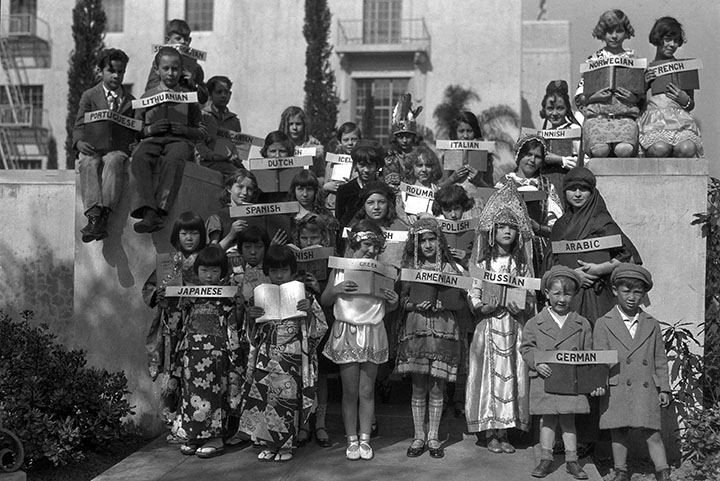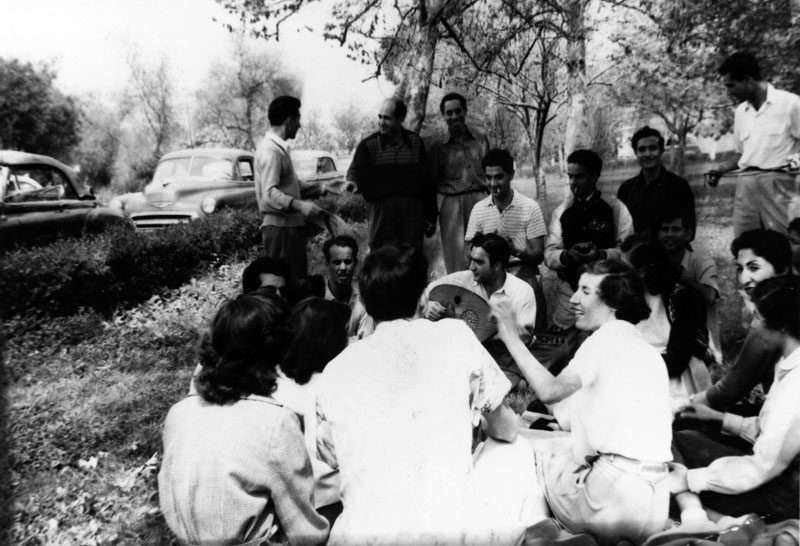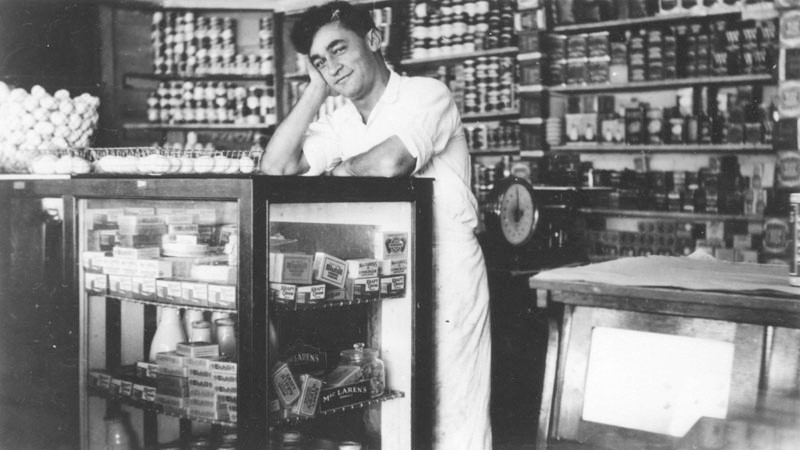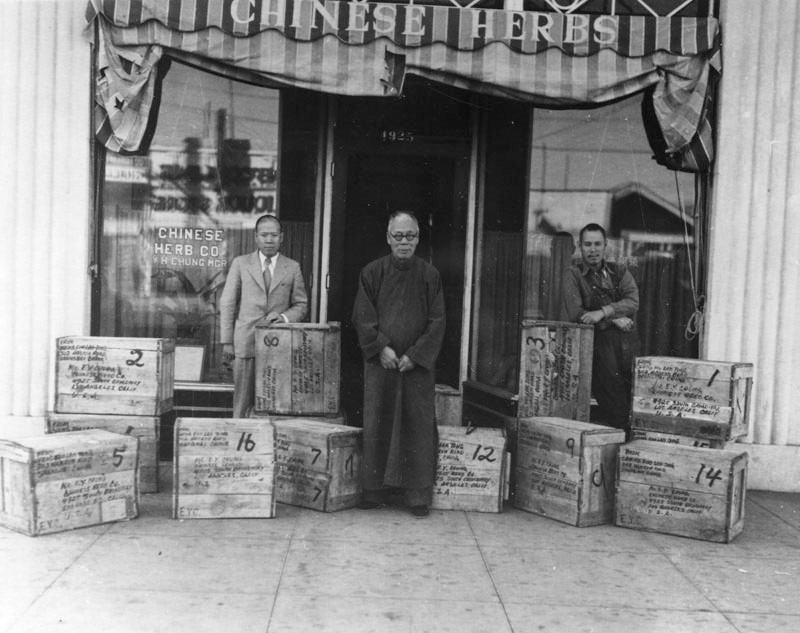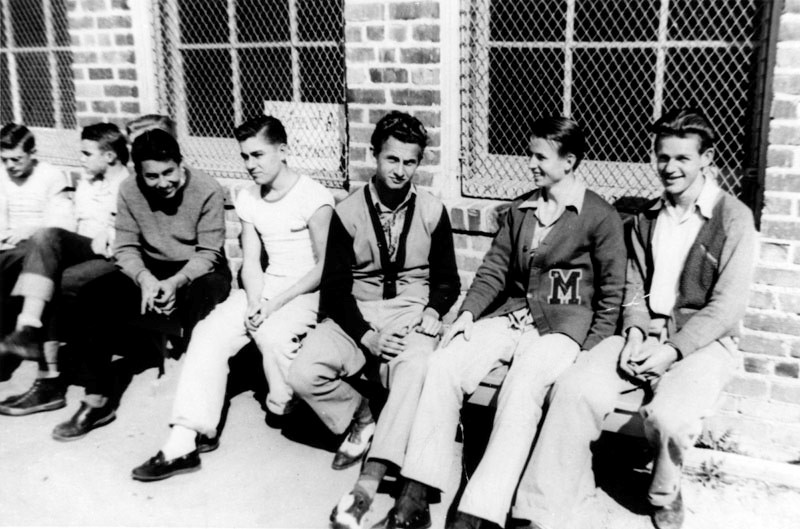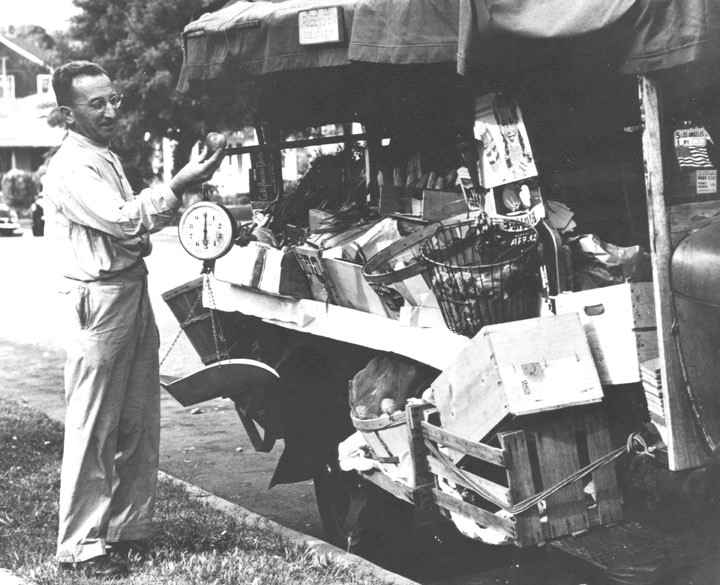Los Angeles has been a multi-cultural, polyglot city from the earliest times. In 1781, the pobladores, a small group of racially diverse farmers from Sonora, Mexico, arrived near the banks of the Porciuncula River at a place that would later become Los Angeles. As new settlers arrived and the town grew, the demand for labor increased, attracting Native Americans from throughout California. Eventually, after statehood and with the building of the Santa Fe Railway, Americans began flooding into the city, along with immigrants from such countries as Armenia, China, England, France, Germany, Ireland, Italy, Russia, and Scotland, all seeking opportunity in the City of Angels. While the road was often rocky, these ethnic groups managed to persevere, sometimes working together to create a city comprised of peoples and languages from around the globe. New waves of immigrants changed the city after World War II, especially with the rise of Communism. In the 1980s, newcomers from Asia, the Caribbean, and Central and South America expanded the scope of the increasingly inclusive metropolis. Fleeing oppression, many have found solace here in places like Cuba, Hungary, or Iran. The true fabric of this great city is comprised of the families who have made their homes here and have brought the best of their customs to Los Angeles, creating a mosaic of many colors becoming one.
In celebration of our city’s diversity, the International Languages department is exhibiting photos from Los Angeles Public Library’s Shades of L.A., Herald Examiner, and L.A. Chamber of Commerce photo collection, highlighting L.A.’s ethnic diversity. Here is a small sampling of the images displayed.
Our International Languages collection reflects our city’s multiplicity with materials in 30 languages are currently available, as well as dictionaries, phrasebooks, and easy readers available in over 500 languages and dialects of the world. As new waves of immigrants arrive, our collection will continue to expand and diversify.
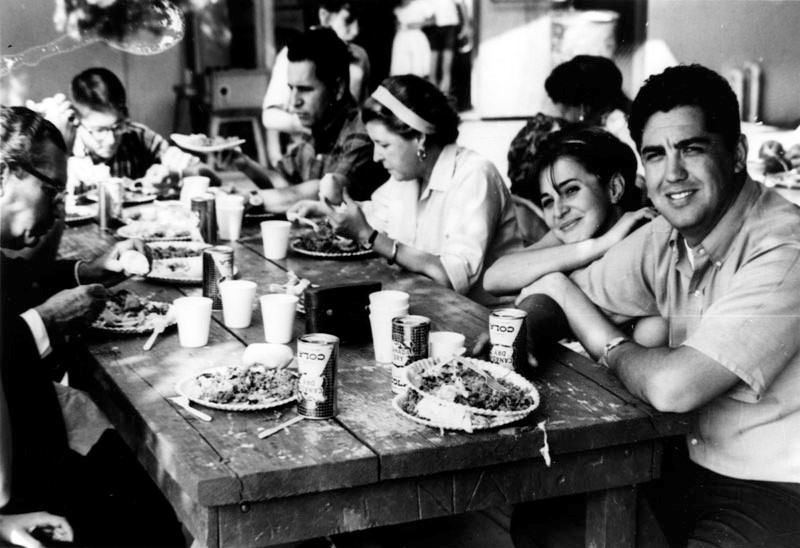
Members of Alpha 66 gather at a 1972 fundraising dinner to benefit for Cubans in Miami. Alpha 66 was an anti-communist organization working for the liberation of Cuba, and was formed by Cuban exiles. (Shades of L.A. Collection)
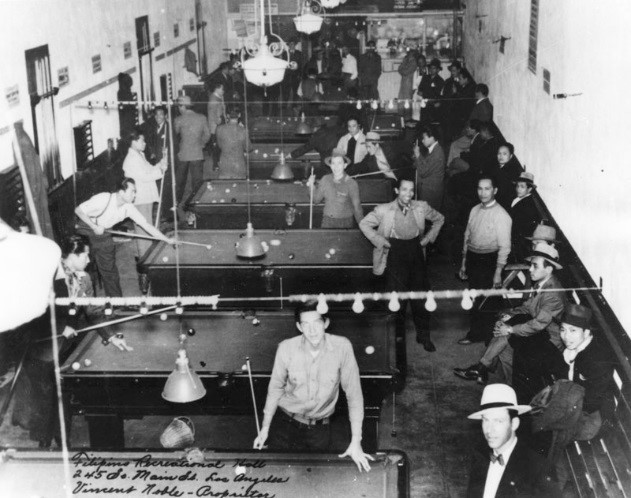
The Filipino Recreation Hall at 245 S. Main Street, in Los Angeles, in the early 1940's. The owner, Vincent, is standing on the right side, fifth from the bottom, holding a billiard rack. (Shades of L.A. Collection)
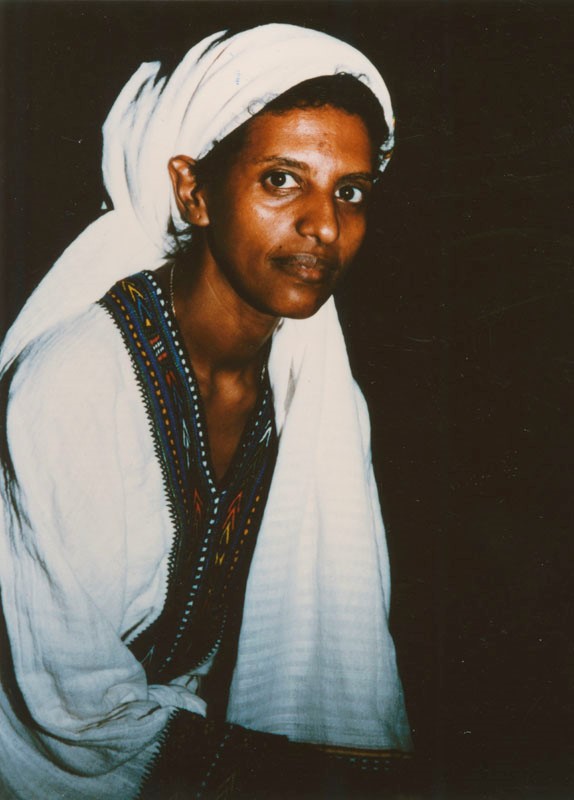
A woman is dressed in traditional Ethiopian clothing in 1995. Her family were among the first Ethiopian Jews to immigrate to the United States. (Shades of L.A. Collection)
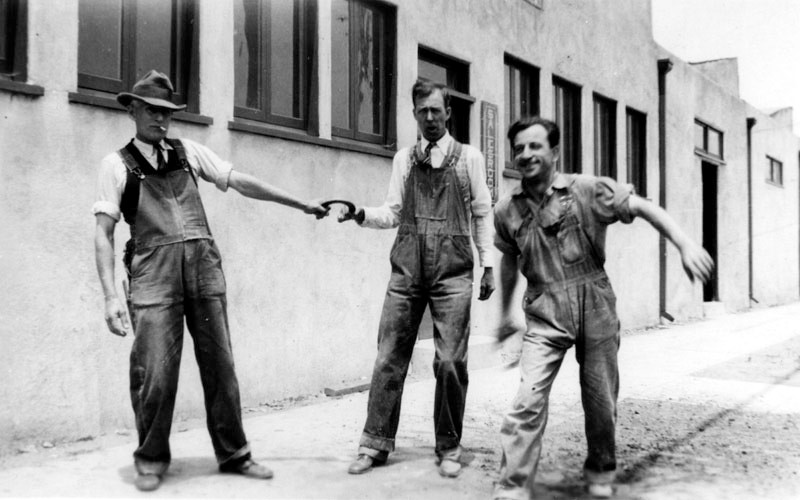
Workers of German and Norwegian descent play horseshoes at break time outside the Claycraft Pottery factory salesroom at 3101 N. San Fernando Road, ca 1928. (Shades of L.A. Collection)
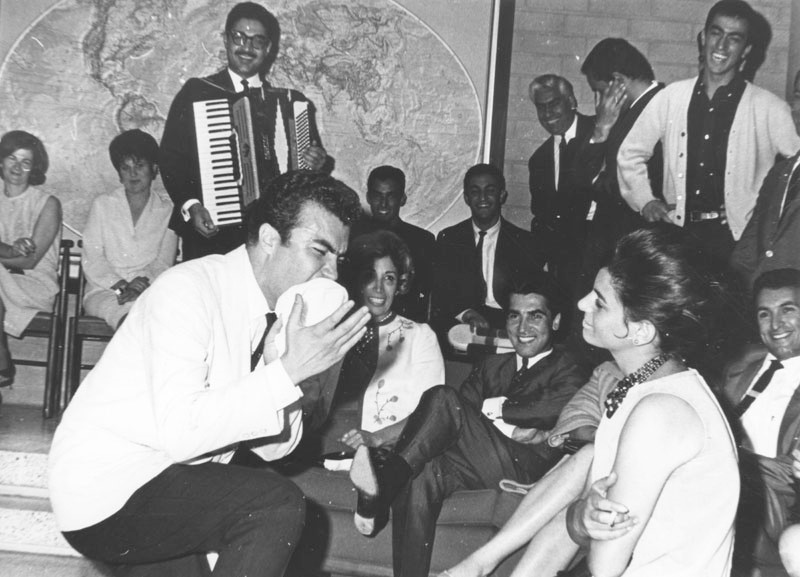
Iranian actor Gharib-Afshar Parviz performing at the UCLA International Student Center in 1963. (Shades of L.A. Collection)
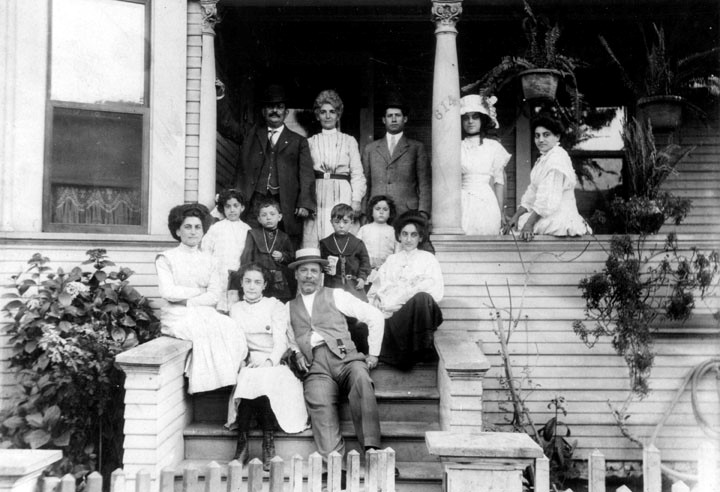
An Italian American family shown on a Sunday in 1910 posing in front of a house located on 614 Alpine. (Shades of L.A. Collection)
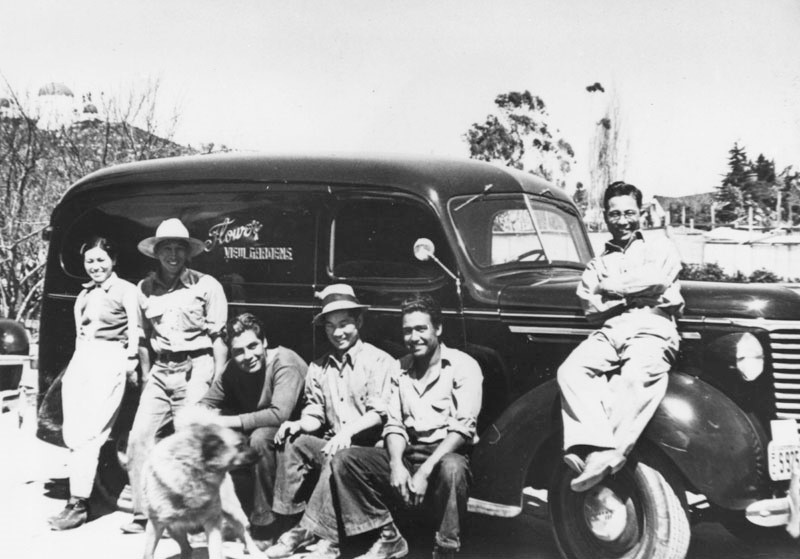
Workers gather by a delivery truck for Flower View Gardens florist, part of a family flower farm on Los Feliz Boulevard. The Japanese American family leased land in Los Feliz to grow flowers for the wholesale market on Wall Street from 1917-1942 and from 1945 until the 1960's. During World War II the family was evacuated to a relocation camp. (Shades of L.A. Collection)
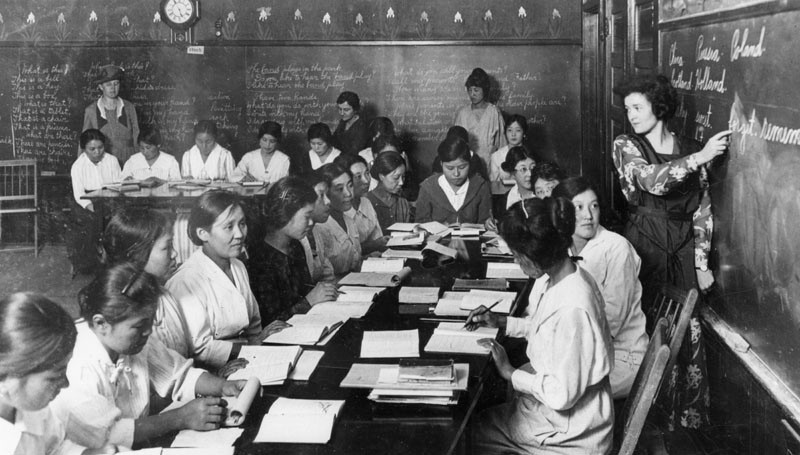
A group of Korean women attend an English class at the Y.W.C.A. International Institute in Boyle Heights in 1922. (Shades of L.A. Collection)
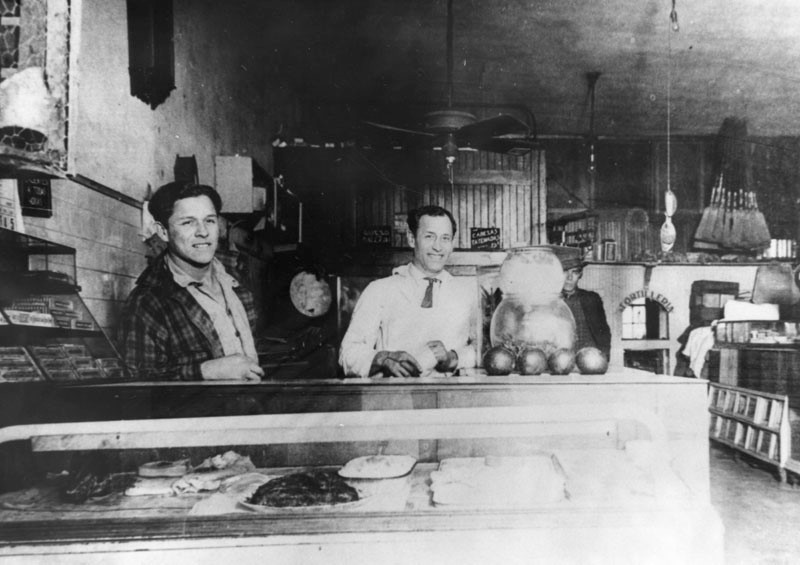
A Mexican American father and son shown inside their grocery store on 1st Street near Mission Ave in 1935. (Shades of L.A. Collection)
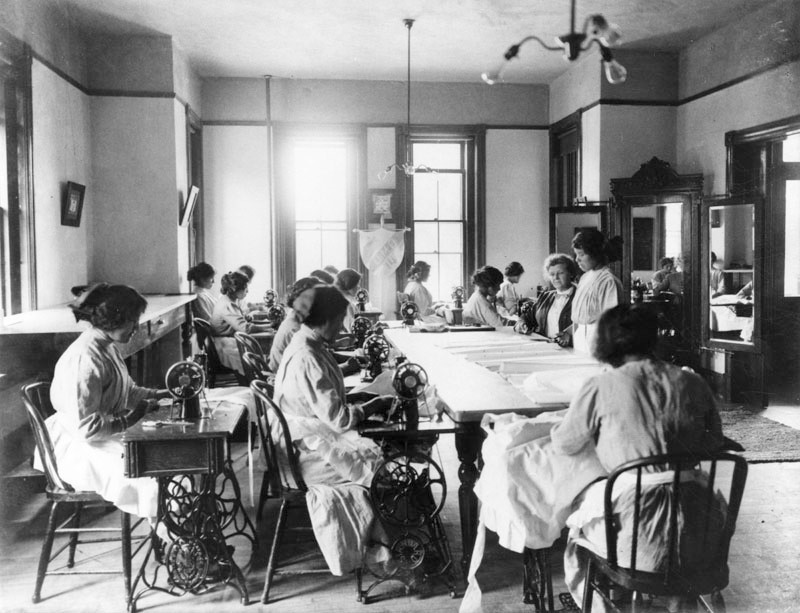
Native American students practice dressmaking at the Sherman Institute in Riverside, ca 1915. (Shades of L.A. Collection)

